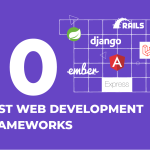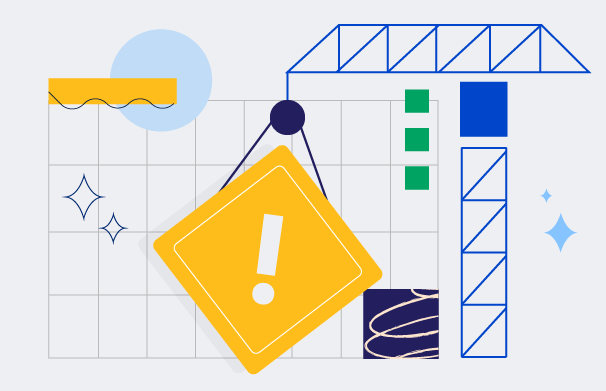To date, the Internet of Things has matured significantly, impacting many areas of our technological and social lives. However, IoT continues to evolve, making the topic of top Internet of Things trends urgent for various businesses and service providers. This article covers the latest IoT trends as of 2024. Keep reading to explore the details.
Overview
Overall, the market for connected devices continues to expand, even in the face of challenges such as the global semiconductor chip shortage and the adverse impact of the pandemic on businesses.
Let’s look briefly at the IoT market in figures.
- In 2023, there were over 15 billion active IoT-connected devices globally, according to Statista.
- This number is forecast to grow to more than 29 billion IoT devices by 2030, including those with WPAN, WLAN, cellular, LPWA, 5G, and other types of connectivity.
- Currently, there are over 400 active Internet of Things platforms, with the top 10 leading IoT platforms controlling about 65% of the market.
- The global IoT market is projected to reach $875 billion in 2025, showing a CAGR of 16.9%, as predicted by Market Data Forecast.
With SaM Solutions’ wide range of IoT services, you get professional support and hands-on assistance at any stage of your IoT project.
Internet of Things Technology Trends 2024
Now, let’s explore the current trends in IoT that will shape the industry’s development this year: IoT security and privacy, edge computing, AI and machine learning integration, 5G connectivity, blockchain, smart cities, generative AI in wearables, voice assistants, IoT connectivity, and IoT in healthcare.
1. IoT Security and Privacy
The increasing number of devices connected to the internet brings new vulnerabilities and exposures to both companies and private users. If one component in an IoT ecosystem is compromised, other devices are automatically at risk, since they are all connected.
Common IoT security issues include:
- data leaks and breaches
- malware, ransomware, DDoS attacks
- software weaknesses due to poor development practices
- outdated software
- device mismanagement
Moreover, the escalating threat of AI-powered cyberattacks underscores the critical need to secure devices, particularly amidst the prevalence of remote and distributed workforces. Consequently, cybersecurity should be a top priority in the development and implementation of IoT solutions across all industries.
In 2024, global information security spending worldwide is predicted to exceed $200 billion.
Here are some tools that help businesses and users protect their Internet of Things solutions.
- Cybersecurity software – more enterprises are investing in software solutions that protect IoT devices from cyberattacks. An example is Quantum IoT Protect by Check Point, which identifies risks, assesses them, and prevents unauthorized access.
- Password management software – digital businesses are adopting solutions that manage IoT credentials and mitigate threats related to weak or default passwords. This includes the periodic rotation of passwords and ensures compliance with security standards.
- Network security tools – companies are enhancing their network security using firewalls, identity and access management (IAM) products, remote access VPNs, and other tools.
- Government regulations – an increasing number of countries are developing and enacting laws and standards to regulate the production and use of connected devices. IoT manufacturers and businesses will be required to comply with a range of security norms.
- Cybersecurity strategy – business leaders are focusing more on developing in-house cybersecurity strategies.
2. Edge Computing
The Internet of Things relies heavily on cloud computing. However, cloud services come with notable drawbacks, such as low bandwidth and potential high latency, leading to challenges in real-time data processing. As a result, many companies are now investing in edge computing technology.
What exactly is edge computing, and why is it currently one of the leading trends in IoT technology?
In traditional cloud computing, data gathered from sensors and devices must travel to a central cloud server for processing before being sent back to the originating source. Typically, this involves covering considerable distances and can result in delays.
Edge computing, on the other hand, allows data collected by a device to be processed directly on that device, eliminating the need to send it to the cloud. This capability has become feasible thanks to the enhanced computing power of modern devices.
- Edge computing is decentralized: data collected on devices (on the edge) is not sent to a central server, but is processed on these same devices. This approach provides higher speed, significant bandwidth savings, and can ensure better privacy compliance.
- Edge computing shares similarities with fog computing – another decentralized approach to data processing. The key difference is that in fog computing, data is shifted from sensors and devices to fog nodes and processors which are closer to end users than cloud servers, such as IoT gateways or LAN networks.
The improved accuracy and speed of data transfer provided by edge computing are crucial for IoT solutions, explaining why more companies are adopting this technology.
3. AI and Machine Learning Integration
Another transformative trend within the IoT industry is the seamless integration of artificial intelligence (AI) and machine learning features that impact the functionalities of devices. This integration empowers connected devices to not only collect and transmit data but also analyze vast datasets in real-time, aiding decision-makers in making informed choices. This unlocks a new realm of efficiency and adaptability.
Data is only useful when it is properly analyzed and applied.
Furthermore, with the proliferation of distributed workforces and the expansion of IoT applications across diverse sectors, the demand for sophisticated, AI-driven analytics has become more pronounced than ever. Organizations leverage the power of machine learning algorithms to derive actionable insights from the vast streams of data generated by IoT devices.Beyond operational efficiency, AI and machine learning are sparking innovation in the IoT industry. This synergy enables the development of intelligent applications, predictive maintenance systems, and personalized user experiences. For instance, in smart homes, AI-driven devices can learn user preferences over time, adjusting settings and anticipating needs. In industrial settings, predictive analytics can forecast equipment failures, enabling proactive maintenance and minimizing downtime.
4. 5G Connectivity
The implementation of 5G connectivity stands out among the current trends in the Internet of Things, ushering in a new era of seamless and high-speed communication. With its unparalleled speed and low latency, 5G serves as a trigger for unlocking the full potential of connected devices.
This transformative technology not only facilitates faster data transfer but also enables real-time interactions between IoT devices, fostering a level of responsiveness and efficiency previously unattainable. As businesses and consumers increasingly rely on interconnected devices, the robust capabilities of 5G connectivity become indispensable, paving the way for innovations in areas like smart cities, autonomous vehicles, and a variety of IoT applications.
5. Blockchain
Blockchain is also among the top Internet of Things technology trends this year. One of the primary advantages lies in the enhanced security and trust it brings to the interconnected web of devices. Blockchain’s decentralized and tamper-resistant nature provides a robust framework for securing sensitive data, mitigating the risks of unauthorized access or data manipulation.
Furthermore, the transparent and immutable nature of blockchain transactions instills a high level of accountability, which is crucial in environments where data integrity is paramount.
In essence, the combination of blockchain and IoT signifies a paradigm shift, offering a secure and transparent foundation for the interconnected future. As businesses recognize the transformative potential of this technology, we can anticipate a widespread adoption that reshapes the dynamics of trust, security, and efficiency within the Internet of Things.
6. Smart Cities
As urbanization accelerates, the concept of smart cities is gaining momentum. It becomes increasingly essential to integrate IoT solutions into city infrastructure to enhance efficiency, sustainability, and overall quality of life for residents.
Through a network of connected devices and sensors, smart cities gather real-time data on various aspects such as traffic flow, energy consumption, waste disposal, and environmental conditions. This wealth of information enables local authorities to make informed decisions, optimize resource allocation, and implement responsive policies.
7. Generative AI in Wearables
Wearables powered by generative AI represent one of the cutting-edge Internet of Things technology trends.
Generative AI refers to artificial intelligence systems capable of creating new content or solutions, often based on patterns and information it has learned. In the context of wearables, this means devices that not only collect data but also dynamically generate personalized insights and responses. The benefits are manifold: users enjoy a more tailored and adaptive interaction with their devices, whether it’s for health monitoring, fitness tracking, or contextual notifications.
This trend is gaining momentum in the IoT industry as it aligns with the growing demand for more intelligent, user-centric technology. As generative AI algorithms continue to evolve, wearables are transforming from passive tools to active companions, adapting seamlessly to individual preferences and needs, thereby enhancing the overall user experience.
8. Higher Integration with Voice Assistants
As voice recognition technology advances, the deeper integration with voice assistants becomes not just a convenience but a pivotal step towards creating more intuitive and user-friendly IoT ecosystems. In this context, it refers to the increasingly close collaboration between IoT devices and voice-activated virtual assistants like Amazon’s Alexa, Google Assistant, or Apple’s Siri. This integration enables users to interact with their smart devices effortlessly through voice commands.
The benefits are evident in increased accessibility, hands-free operation, and improved efficiency, particularly in settings where manual interaction may be challenging or inconvenient. From smart homes with voice-controlled lighting and temperature settings to industrial applications where hands-free operation of machinery is critical, the applications of speech recognition, dictation, and transcription solutions are diverse and continually expanding.
Get SaM Solutions’ IoT consulting or development services to deliver a competitive IoT product cost-effectively.
9. IoT Connectivity
IoT connectivity takes center stage as a driving force behind the seamless interconnection of devices. This term encapsulates the various protocols, networks, and technologies that facilitate the exchange of data between Internet of Things devices. Robust and efficient IoT connectivity is essential for ensuring real-time communication, enabling devices to share information and collaborate intelligently. There are various types of IoT connectivity, including Wi-Fi, Bluetooth, Zigbee, LoRaWAN, and cellular networks, each tailored to specific use cases and requirements.
As technology continues to advance, the trend toward enhanced connectivity not only propels the efficiency of IoT ecosystems but also lays the groundwork for innovative solutions that redefine how we interact with and leverage connected devices in our daily lives. This trend reflects an ongoing commitment to optimizing communication pathways, fostering a more connected and responsive future across diverse industries and applications.
10. IoT in Healthcare
The healthcare sector is experiencing considerable investments in digitalization, with a focus on adopting IoT technology. The Internet of Things has the potential to transform the entire industry by enhancing diagnostics and enabling personalized treatment approaches. It’s not surprising that a specialized branch, known as the Internet of Medical Things (IoMT), has emerged as part of the broader digital health concept.
Some IoT use cases that have become popular in hospitals around the world include:
- medical wearables
- patient data collection and analytics
- smart diagnostic tools
- robotic surgery machines
- monitoring systems to supervise patients
- controlling systems for storage conditions in laboratories
The healthcare business model undergoes changes with the influence of IoT, bringing advantages to both patients and service providers:
- Cost reduction. By utilizing IoT sensors, healthcare providers ensure continuous real-time monitoring for patients who require it. This improves the quality of medical care and cuts costs, as medical professionals no longer need to regularly check patients’ vital signs.
- Enhanced disease control. Continuous monitoring of patients and access to real-time data enable early diagnosis and preventive care. Combined with ongoing assessment of therapy effectiveness, healthcare providers can help prevent serious complications.
- Remote consultations. Certain population groups, such as those in remote areas, face challenges in accessing medical institutions promptly for effective treatment. These individuals can use IoT solutions along with mobile applications to collect and share health data with doctors, receiving consultations based on it.
- Patient engagement. IoT in healthcare shifts the focus to patients and their needs. Patients now have more control over managing their health conditions independently and only need to contact a medical specialist when necessary. This creates a new relationship model between doctor and patient, where the latter becomes a partner in preventing and treating diseases.
How SaM Solutions Can Assist You in IoT Development
Embedded and IoT development is among the key services SaM Solutions offers to its clients. We assist companies across various industries in transforming their ideas into effective IoT solutions.
Our team of highly experienced developers is equipped to deliver a range of services tailored to your needs. Whether it’s end-to-end IoT implementation, IoT cloud development, consulting, audit and architecture assessment, troubleshooting IoT devices, integration, or other related services, we have you covered.
Takeaways
The trends compiled in this article highlight the expanding scope and diverse use cases of IoT across various sectors. As businesses continue to invest in and adapt to these trends, the future of the Internet of Things appears promising, characterized by sustained growth, novel applications, and a profound impact on how we interact with and perceive technology in the years to come.



























 5 Reasons Why Your Business Needs a Mobile eCommerce Application
5 Reasons Why Your Business Needs a Mobile eCommerce Application Using Salesforce to Improve Your Sales Pipeline: Five Tips
Using Salesforce to Improve Your Sales Pipeline: Five Tips Cross-Platform Mobile Development: Five Best Frameworks
Cross-Platform Mobile Development: Five Best Frameworks How to Develop Custom Accounting Software
How to Develop Custom Accounting Software 10 Best Web Development Frameworks in 2024
10 Best Web Development Frameworks in 2024
















 Top 30 Ecommerce Tools to Elevate Your Business in 2024
Top 30 Ecommerce Tools to Elevate Your Business in 2024 5 Best Tools to Improve Embedded Software Testing
5 Best Tools to Improve Embedded Software Testing Why React and Node.js Are the Top Technologies for Creating High-Performance Web Apps in 2024
Why React and Node.js Are the Top Technologies for Creating High-Performance Web Apps in 2024 10 Best IoT Platforms for 2024
10 Best IoT Platforms for 2024
If you keep an eye on the current IoT trends, you can generate more exciting ideas and then develop effective Internet of Things solutions for new application spheres.
IoT solutions add so much value to medical organizations and patients, improve treatment and save lives. All countries should invest more into the medical internet of things.
Cybersecurity issues go hand in hand with IoT, this is the fact. That’s why data protection tools are crucial for all businesses leveraging IoT solutions.
There are so many devices and objects connected to networks worldwide that we can hardly imagine how much information is available online. So we have the infinite area to create new IoT applications.
The Internet of Things is an ever-evolving industry, and it’s always interesting to learn new IoT trends. Thanks for keeping us up-to-date.
I agree that government regulations are necessary to protect loads of sensitive data produced and processed by IoT systems. Unfortunately, not all countries pay much attention to it yet.
This is my first time visit at here and i am in fact pleasant to read all at one place. Good article about IoT trends!
Great post. It has covered all the IoT trends with proper explanation. Thanks for this valuable piece of information.